Competitor keyword analysis is an important skill to master when it comes to outranking your competitors.
Everyone wants their pages to be number one in the search engine results pages (SERPs), but as with all competitions, there can only be one winner.
With over a decade's worth of digital marketing expertise, I’ve had plenty of pages on my website reach the top five in Google Search, all with the help of well-conducted competitor keyword research.
In this ultimate guide, I’ll explain exactly what keyword analysis is, how to do it, and what tools you need to be the best at it. Let’s get started.
Disclosure: This post may contain affiliate links, and we may earn a small commission, at no extra cost to you. However, this does not impact our reviews and comparisons. We try our best to keep things fair and balanced in order to help you make the best choice for yourself.
What is Competitor Keyword Analysis?
Competitor keyword research is the process wherein you analyze the webpages of competitors within your niche to see which keywords they are using and ranking highly for.
The ultimate goal in doing so is to be able to use that information to create content that outperforms their content, thus ranking higher on search engines when people search for that specific topic.
Here’s an example of using keywords correctly to rank number one on Google Search results.
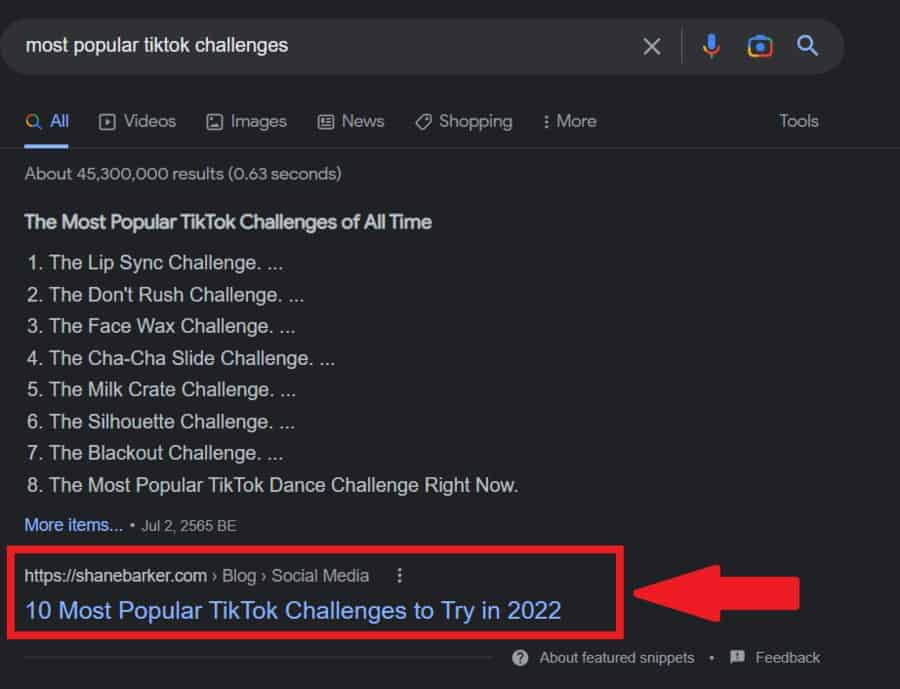
If you’d like your pages to rank first and get featured snippets, keep reading.
The Importance of Competitive Keyword Analysis
Competitor keyword research is important because a thorough understanding of the keywords your competitor is using, and how they’re using them, can help you create content that competes with and eventually outranks them.
Why outrank your competitors?
How many times have you gone beyond the first page of Google Search results? The answer might surprise you!
A study of over 4 million Google Search results showed that only 0.63% of users clicked on search results on the second page of Google Search.
This makes getting your pages ranked on the first page of Google Search crucial to the success of your website.
Finding success all starts with picking the right keywords to write about.
You might be thinking, what’s the harm in picking your own keywords and targeting them by publishing high-quality content optimized with those keywords? Nothing, really.
However, it is likely that you will be shooting in the dark with this approach.
For instance, you may have to go through a few hit-and-miss attempts before you find the keywords that are actually worth ranking for. There are plenty of reasons why it might not work. One such example is search volume.
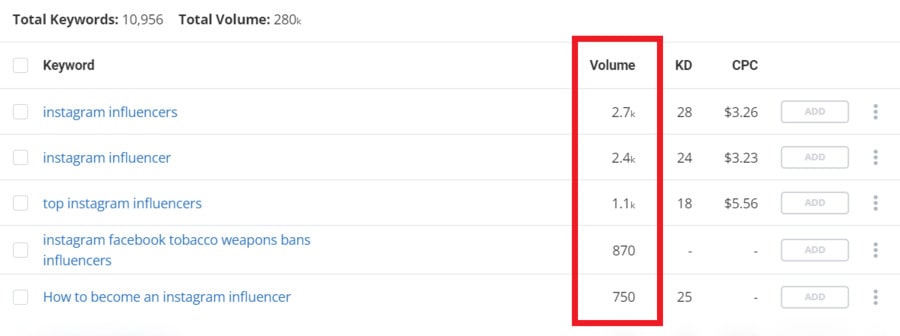
The search volumes shown in this picture show the number of organic searches that were made this month on Google Search using each keyword. The higher it is, the more people searched for it.
If you’re picking the wrong keywords (ones that people aren’t really searching for), you’ll end up with very little to no organic traffic on that page.
This is where SEO competitor analysis comes in handy.
By finding out what is working for your competitors, you can determine what you need to do to improve your rankings. It eliminates the need for making your own mistakes and learning from them.
For instance, instead of selecting your target keywords, you can opt for a thorough competitive keyword analysis. This type of keyword research can give you access to a treasure trove of high ROI keywords that are already bringing your competitors success.
It is evident that analyzing your competitors is crucial for shaping your own SEO strategy. It helps you understand the tasks you need to prioritize in order to outrank them. You also get a fair idea about the kind of resources you will need to beat them.
Now that we know why researching competitors’ keywords is important, let’s find out how you can do it.
How Do You Analyze a Competitor’s Keywords?
There are a few important steps to take note of when analyzing competitors' keywords.
1. Define Your Niche and Competitors
It is important to define who your competitors are before you even think of outranking them. For instance, if you run an ecommerce business, you might think about big brands like Amazon and eBay as your competitors.
As a small business, it would be impossible to compete with these industry giants. They have been in the business for many years, have invested large sums of money into their websites, and have built up their domain authority.
It would be wise to try to compete with smaller domains and more specific keywords.
Running a simple Google search with the keywords you want to rank for will reveal the biggest players in your niche.
Let’s say, for example, you’d like to write about TikTok trends. Start off by entering that into Google Search. Then look at the top results.

These websites are likely to dominate both organic and paid rankings. If you have a new website with relatively low domain authority, it may not be advisable to go after them. Instead, you can look for the softer target competitors.
Tools such as Semrush can help you identify your possible competitors.
Simply enter your own domain name and scroll down to the “Organic Competitors” section.

One click on the “View Full Report” button will reveal the websites you are competing against.
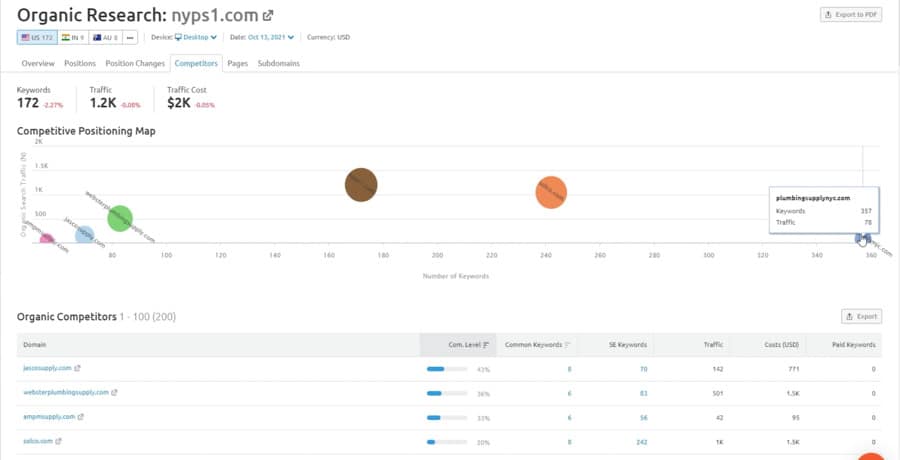
Other tools like SimilarWeb and Alexa can also be used for this purpose.
The next step is to take a look at the key metrics for each competitor. The metrics that you should check include domain authority and inbound link profile.
Take a look at the number of domains linking to a competitor’s website. You should also pay attention to the rate at which new domains link to their website on a monthly basis.
In addition, you should also take a look at the level of competition, overall website traffic, common keywords, etc. during your keyword research.
The report generated by Moz combines these metrics to give you a comprehensive view of your competitor’s website.
This data is extremely important because it tells you what you are up against and the kind of resources you will need to overthrow them.
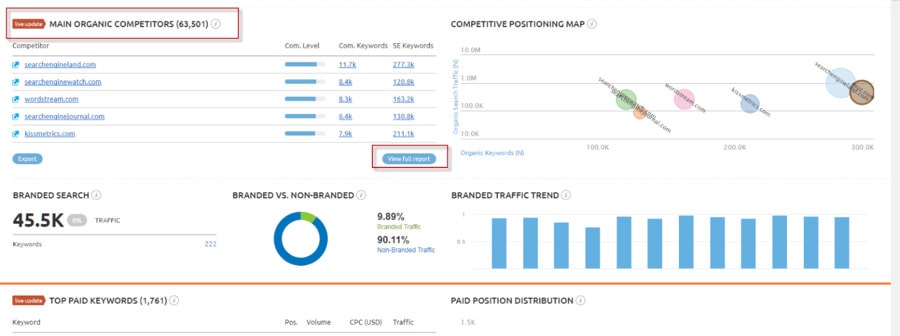
It is at this point that you should consider whether a competitor is worth going after, given the number of resources at hand.
Moz recommends that you use a Google Sheets Competitor Analysis Template to compile all the data you get from your SEO competitor analysis. This allows you to compare different metrics and focus on evaluating the results.
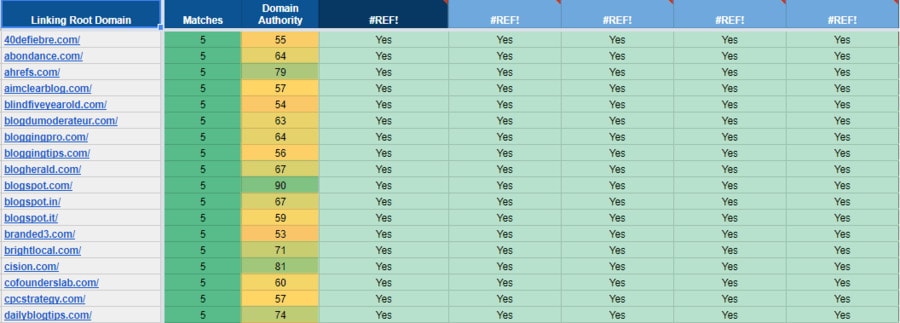
Now that you have picked the competitors you want to outrank, it is time to take a closer look at their SEO strategies.
2. Identify Keywords Competitors Are Using
Now that you know who your competitors are, you can start your competitor keyword research.
This process helps you identify the high ROI keywords that are being targeted by your competitors.
Even the best content will fail to drive traffic unless you target relevant keywords. This makes keyword research such an important part of SEO.
There are two ways to go about keyword research.
The first approach is to use keyword research tools such as Google’s Keyword Planner to get the possible keyword ideas.
Here’s an example using Google Keyword Planner to search for the keyword “SEO”.
Image via Ahrefs
However, merely picking these phrases and using them in your content won’t yield the desired results. You need to validate each keyword by considering the overall competition associated with those keywords.
This brings us to the second method – competitor keyword analysis.
The biggest advantage of this approach is that it reveals the keywords that are already bringing success to your competitors.
It is likely that they will be useful for you too if you use them judiciously. With this approach, get access to a plethora of high ROI keyword opportunities.
Competitive keyword analysis involves different stages such as identifying a competitor’s keywords and evaluating each keyword.
By the end of the process, you are armed with a collection of high ROI organic keywords that are known to bring success. Now let’s take a look at the different steps involved in competitor keyword analysis.
Using a tool like Semrush will make it easy to find these keywords.
On the left-hand side click on the “Keyword Gap” section and enter your domain, as well as four other competitors you already researched.
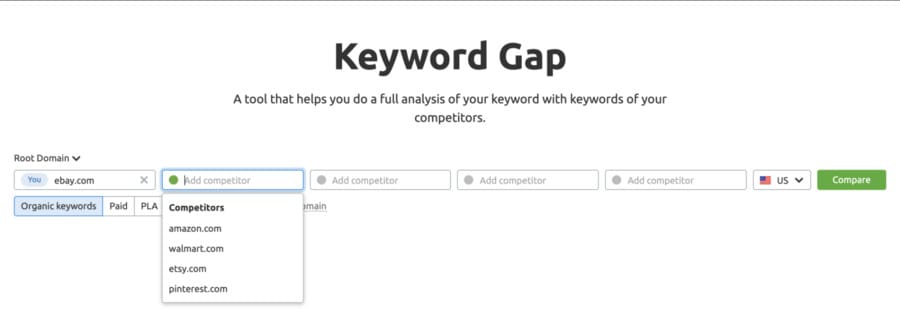
This will provide you with a list of keywords from your and your competitor’s domains. Here you can also filter keywords that you are looking for. A great way to see where your domain isn’t doing well is to filter weak keywords.
This will show you keywords where your domain isn’t doing well against your competitors. These keywords should be your top priority if you want to outperform your competitors.
3. Analyze and Organize Your Keywords
Once you’ve filtered out any keywords you don’t want, it’s time to export this data.
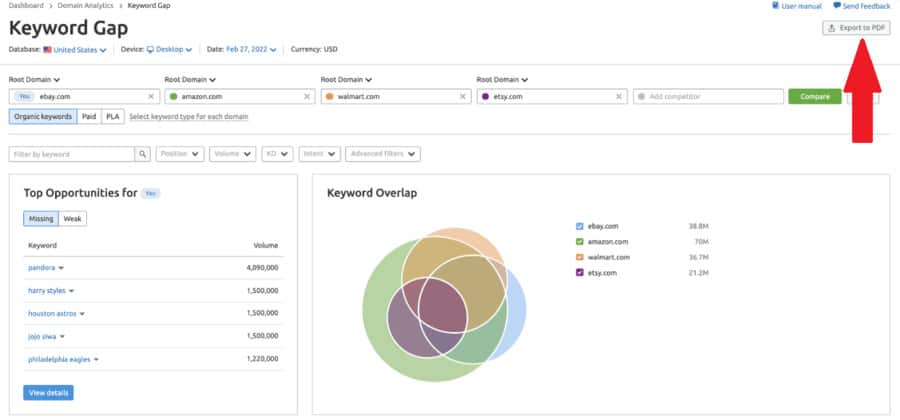
Information can be exported as a PDF, CSV, or CSV semicolon file.
Now all you need to do is organize this information.
Here are some important things to do when organizing keywords for your website.
- Make sure to cross-check and eliminate any keywords that your competitor might use that are not relevant to your website.
- Find keywords that have higher domain authority. These keywords will help your content rank better in the long run.
- Look for keywords that have high competition and eliminate them for now. The higher the competition, the more difficult it will be to rank well, especially if your website is relatively new.
How to Use Competitor Keywords to Your Advantage
Having a long list of keywords used by your competitors won’t mean much if you don’t know how to utilize them correctly. Here’s how you can make use of the keywords you gathered.
Write Content Using the Keywords
Sounds simple enough, right?
Thing is, writing an article using keywords you got from your competitor will most likely result in similar content. If you’re starting out a new website, that won’t get you the result you’re hoping for.
Older websites, with a decent amount of organic traffic, will have more authority, which means even if you write a good article, it won’t rank higher than a similarly written article posted on a site with higher authority.
That shouldn’t discourage you from creating content with the same keywords though. If you persistently write engaging content, with the right primary and secondary keywords, as well as consistently post new articles, your website will build some authority.
This is especially true when backlinking is done correctly as well. Over time, you’ll start seeing a rise in organic traffic.
Use Keyword Clusters
You might come across a lot of generic categorical keywords such as “fine-dining restaurants,” “beauty salons,” “wellness spa,” etc.
Ranking for more general keywords organically is a difficult task, and it may not be worth the effort.
The reason for this is that these keywords usually describe a niche or category, making them highly competitive.
For a more competitive edge, and to give you a higher chance to rank better, use more specific keyword clusters.
In addition, such keyword clusters will also have a high collective search volume. Some examples include “fine-dining restaurants in Chicago,” “beauty salons in Brooklyn,” “wellness spa in Manhattan,” etc.
Semrush’s Keyword Magic tool can help you find keywords and create keyword clusters.
Explore Paid Keywords
An important step that website owners often ignore while performing keyword research is scrutinizing paid keywords.
Some of your competitors might be investing heavily in paid search ads by bidding on expensive keywords.
Unless you have the finances for running costly PPC campaigns, it is advisable to target these keywords organically.
Organic search results are often perceived as more credible than paid ones above them. This may give you a slight edge over your competitors.
You can easily find paid search terms from Semrush. In the Organic Research section, after searching for domains, you’ll see a column that shows paid keywords under “Organic Competitors”.
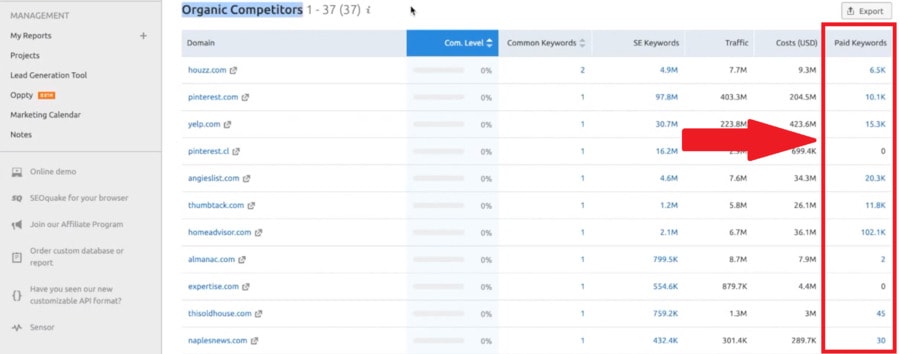
Clicking on any of these will take you to the paid keyword dashboard of the selected domain.
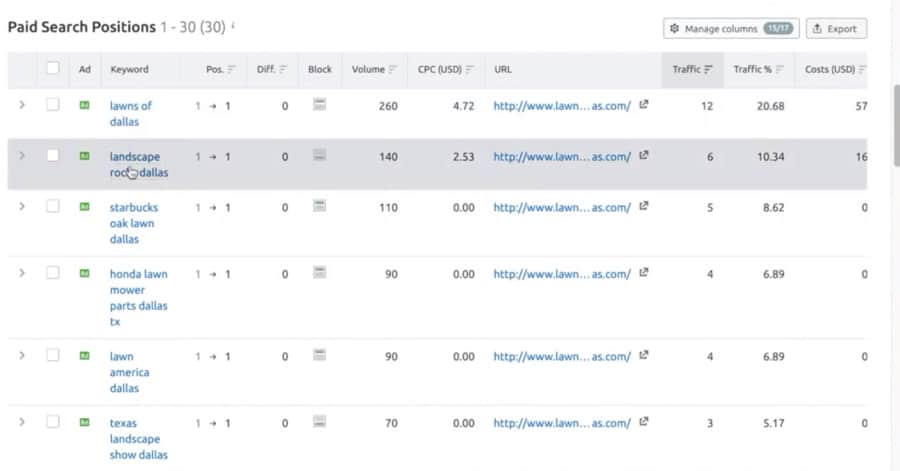
There you can find paid search positions, showing you how well the keyword ranks, it’s CPC, traffic, and the URL.
Utilize Competitor Ranking Changes
Another excellent way to utilize keywords is to keep an eye out for any ranking drops in your competitor’s keyword rankings.
When you run the “Organic Research” on Semrush to find your competitor’s keywords, you can also click on the “Position Changes” tab.
There you’ll be greeted with a graph that shows their keyword rankings and whether they’ve gained or dropped any positions.
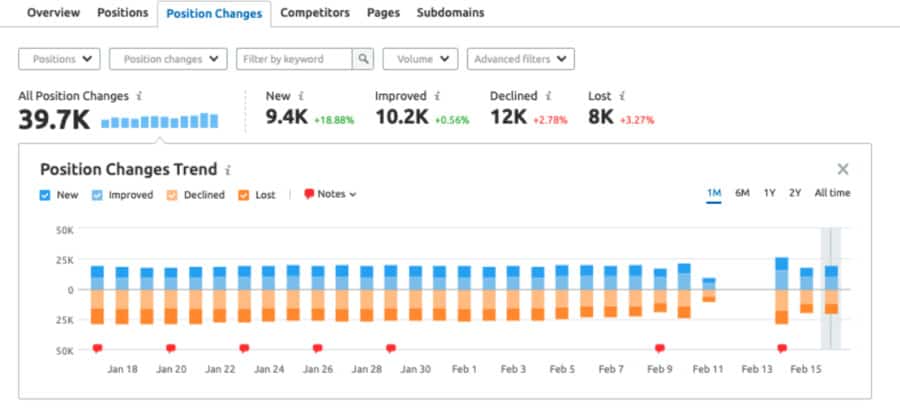
When one of their keywords loses a few positions in its ranking, you can take advantage of that, creating content with that keyword to try and outrank them.
If you already have content related to the keyword, you can always run an on-page SEO checker to find ways to improve it.
How To Do Competitor Keyword Gap Analysis
Keyword analysis doesn’t end with compiling a list of search queries to be targeted organically.
Along with this, you also get access to a plethora of useful information about your competitors’ weaknesses. These are the gaps you must exploit to your own advantage.
Once you have zeroed down on your final list of keywords, run a Google search for each one of them.
Analyze the top results in terms of the following metrics:
- Domain Authority – The total number of websites that link to various pages on a particular domain. A higher domain authority indicates a more powerful competitor.
- Link Profile – The total number of websites that link to a particular page. Numerous genuine high-quality backlinks have a positive impact on search engine rankings.
- Content Relevance and Quality – It must satisfy the user’s search intent. In addition, it should be unique, lucid, and error-free. Keywords should be incorporated seamlessly into the content.
- User Experience – Search engines prefer websites that are user-friendly, mobile-responsive, and fast-loading. You can check the mobile responsiveness of a website using Google’s Mobile-Friendly Test Tool. Likewise, you can check your load time using Google’s Page Speed Insights.
- Site Architecture and Meta Tagging – A fluid site architecture makes it easy for search engine robots to navigate through the website and index various pages. This ensures that such pages rank for relevant search queries. All pages on a website should also have meta tags incorporating relevant keywords.
Check how well the top results fare for the different metrics. Any loophole in this regard can open up new opportunities for you.
For instance, if one or more of the top results is not mobile-responsive, it indicates that there is a lack of mobile-friendly websites for that particular search query.
In the absence of too many credible options, Google perhaps had to grant a higher rank to an average website.
This means if your website delivers a smooth user experience on mobile devices, it stands a chance to climb up the SERP ladder.
Competitor keyword analysis helps you narrow down the organic keywords you want to rank for. However, targeting these keywords demands the creation of high-quality content with them. Before you start with this, assess the quality of content on your competitors’ websites.
If a competitor’s content is thin, boring, or filled with grammatical errors, you have a better chance of outshining them. However, if their content is highly engaging, outranking them would require extra effort.
Pay attention to the type of media (images, graphics, videos, etc.) they are using. Check the number of social shares and comments on their blog posts. In addition, look for content opportunities that haven’t been fully explored by your competitors.
Backlink Gap Analysis
While scrutinizing SEO competitors, website owners often focus all their energy on keyword analysis. In the process, they end up ignoring the link-building opportunities that can also be exploited using SEO competitor analysis.
Despite publishing high-quality content, your website may still lag behind due to a poor backlink profile. So it is crucial to bridge any gaps that exist between your competitors’ inbound link profile and your own backlinks.
The first step is to identify the websites that are already linking to your competitors. You can do this with the help of the Moz Link Explorer tool.
Simply input a competitor’s domain name and navigate to the “Linking Domains” section. Click on “Request CSV” to download the file. Repeat this process for all your competitors.
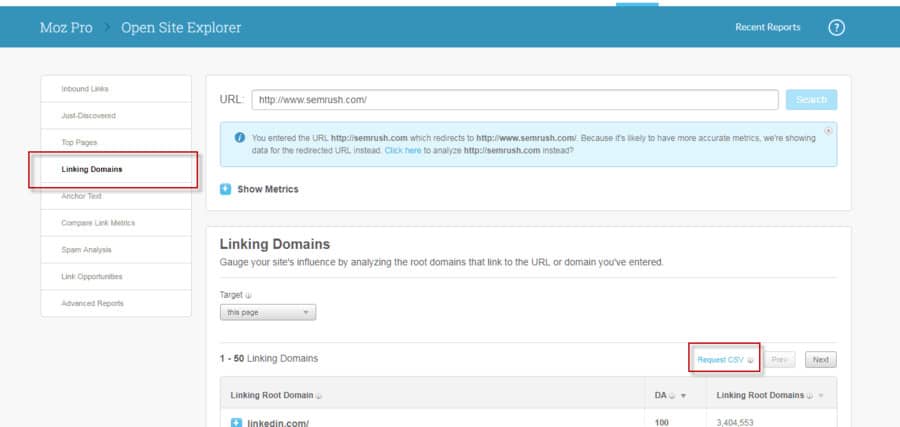
This report gives information regarding the websites that link to a competitor, along with the domain authority of such websites.
From this data, identify the websites that are linking to your competitors, but not to you. These are the backlinks you should be aiming for in order to beat your competitors.
This is especially useful for new websites that may find it difficult to earn backlinks from high-authority websites.
You should exercise a certain level of caution while mimicking a competitor’s backlink profile.
Keep an eye out for link spam. If your competitor is using black hat techniques to purchase backlinks, it is best to let them be. Their ranking won’t stand the test of time, and may even get penalized by search engines.
Bonus Tip: Take Your SEO Competitor Analysis Offline
With competitor keyword analysis and backlink gap analysis, you are almost ready to wage an SEO war against your competitors.
However, it is also advisable to evaluate the offline marketing strategies adopted by these competitors.
That’s because offline advertising increases the number of branded searches. This, in turn, has a positive impact on a website’s search engine ranking.
Offline marketing techniques include radio ads, television commercials, print ads, direct mail, etc.
Keep an eye on newspapers and magazines to see the latest marketing tactic your competitors are using in their ads.
Likewise, you can check YouTube for their latest video ads. Think of ways to imitate any offer or trend they are currently promoting.
The 5 Best Tools for Finding Competitors’ Keywords
Now that you have the perfect guide to analyzing and utilizing competitor keywords, it’s time to get the right tools.
All the knowledge in the world won’t mean much without the correct tools.
Here are the 5 top tools for finding competitor keywords.
1. Find Competitors’ Keywords Using Semrush
Semrush is one of the best and most popular SEO tools on the market. It’s also the SEO tool I personally use and recommend.
Here’s how to do competitor research using Semrush.
- Firstly, you’ll need to create an account if you don’t already have one. Not feeling like signing up and paying a fee, don’t worry I’ve got you covered. Click here for a 14-day free trial of their Pro Plan.
- Now make your way over to the “Organic Research” dashboard. Enter the competitor’s domain URL.

- Once you click search, you’ll be greeted with the Organic Research dashboard. From there just scroll down or click on the positions tab to see keywords and their rankings.
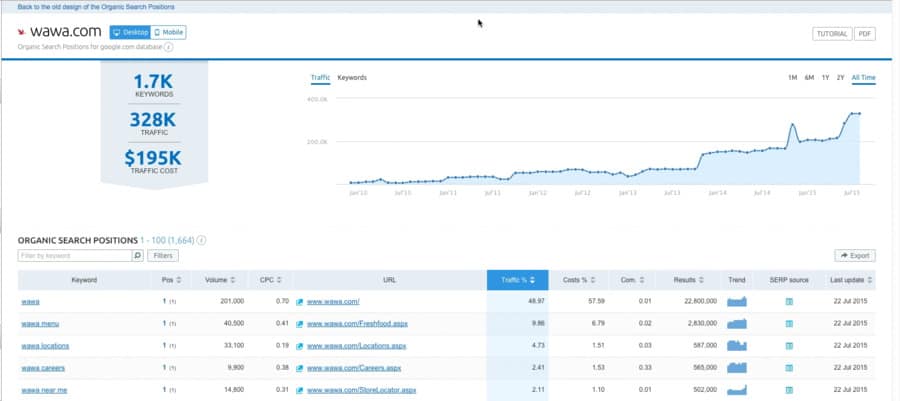
Alternatively, you can also use Semrush’s “Keyword Gap” tool. With it, you can enter your domain and four other domains to find related keywords and compare their rankings to yours.
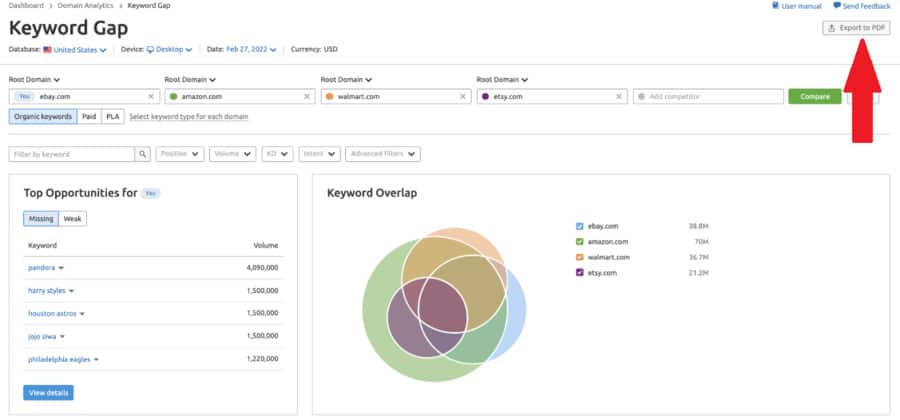
For a full review of all of the excellent SEO features Semrush has to offer, click here.
2. Find Competitors’ Keywords Using Ahrefs
Ahref comes close second to Semrush when it comes to SEO tools.
Here’s how to find competitor keywords on Ahrefs.
- To use Ahref, you’ll need to create an account first. Ahref’s Lite Plan for $99 offers all the tools needed to find competitor keywords.
- To find competitor’s keywords, you’ll need to go to Ahref’s “Site Explorer.”
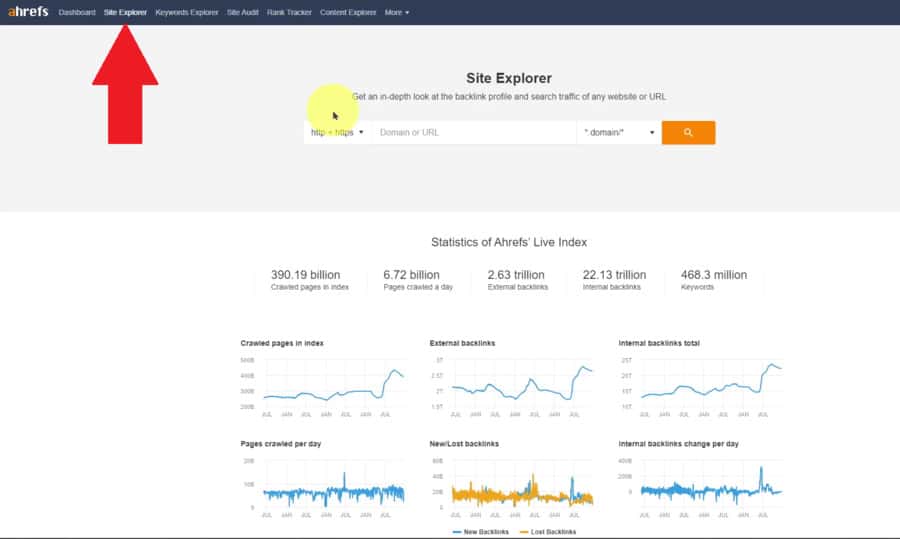
- After entering your competitor’s domain, you can click on “organic keywords” on the left-hand side.
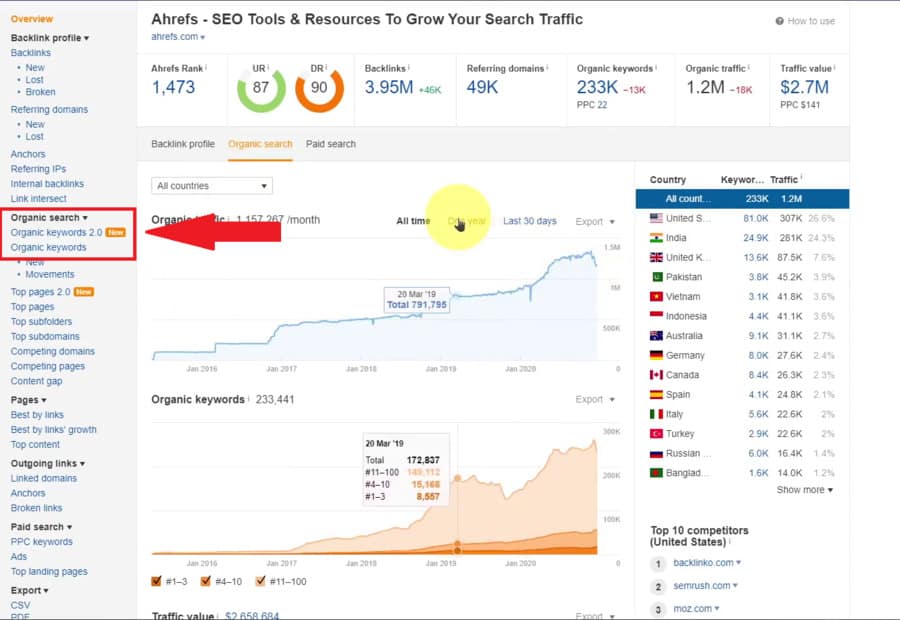
For a full review of all of the awesome SEO features offered by Ahrefs, check out my full review.
3. Find Competitors’ Keywords Using Moz
Moz is an all-in-one SEO solution for your website.
Here’s how to use Moz to find competitor keywords.
- You’ll need to create an account to use Moz. To try Moz free for 30-days, click here.
- Firstly, click on keyword research. This tool can be found on the left-hand side when using Moz Pro.
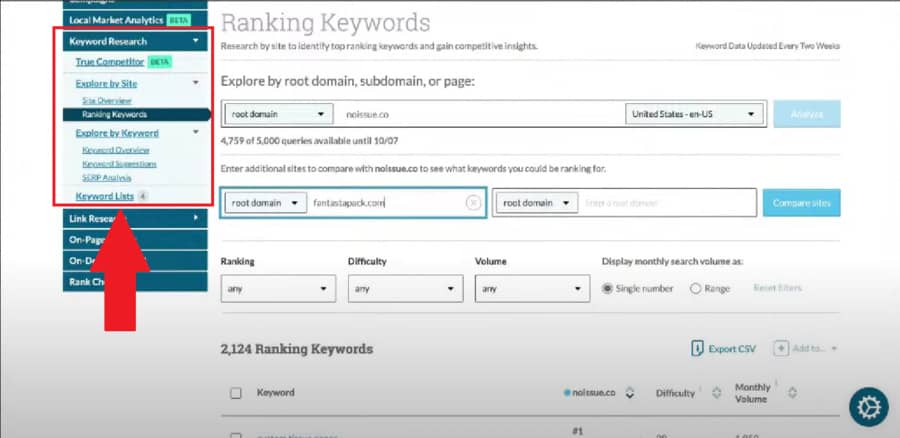
- Enter your competitor’s domain URL to find keywords they’re using. If you want to compare keywords, simply add your domain URL first, then your competitors underneath. When done, you’ll get all the keywords and their rankings.
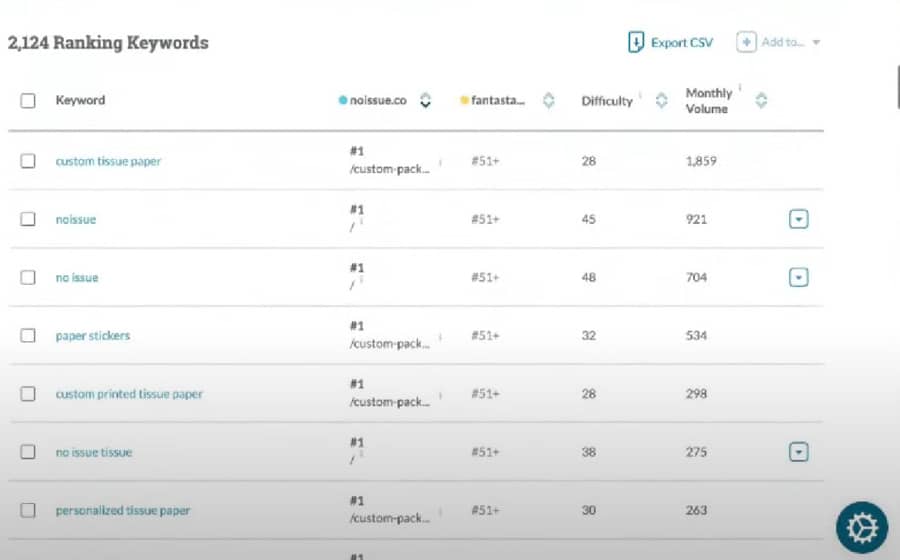
Not sure which SEO tool to use? Semrush, Ahrefs, and Moz are all excellent options, but you’ll most likely only need one of them.
For an in-depth review and comparison of each, check out Semrush vs. Moz vs. Ahrefs
4. Find Competitors’ Keywords Using Spyfu
Spyfu is going to be my free SEO tool recommendation. Spyfu has paid versions, but their keyword research tool is completely free to use.
Here’s how:
- Firstly, go to spyfu.com
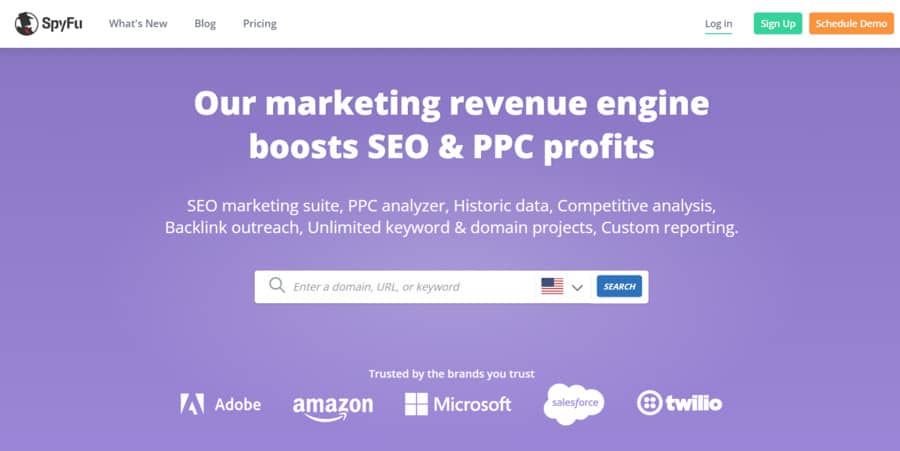
- Enter a competitor’s domain, then click on “Top Keywords” on the left-hand side.
- Scroll down, and you’ll find a list of the top-performing keywords in that domain.
If you’re interested in using Spyfu and might be wondering what differences Spyfu has compared to Semrush, check out Semrush vs. SpyFu: Which Is the Best Tool?
5. Find Competitors’ Keywords Using Google Keyword Planner
The Google Keyword Planner is Google’s solution to finding competitor keywords for your business.
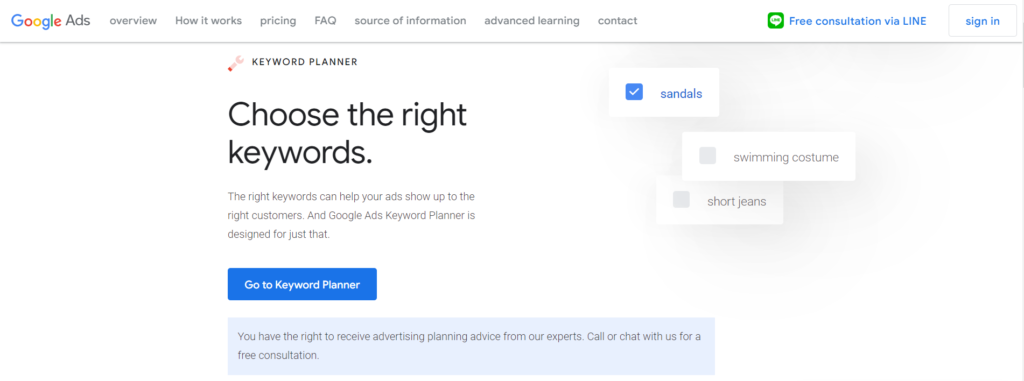
To be able to use it, you’ll need to be in expert mode, and have a Google Business account.
- To start, you’ll need to go to Keyword Planner. On the dashboard simply click on discover new keywords.
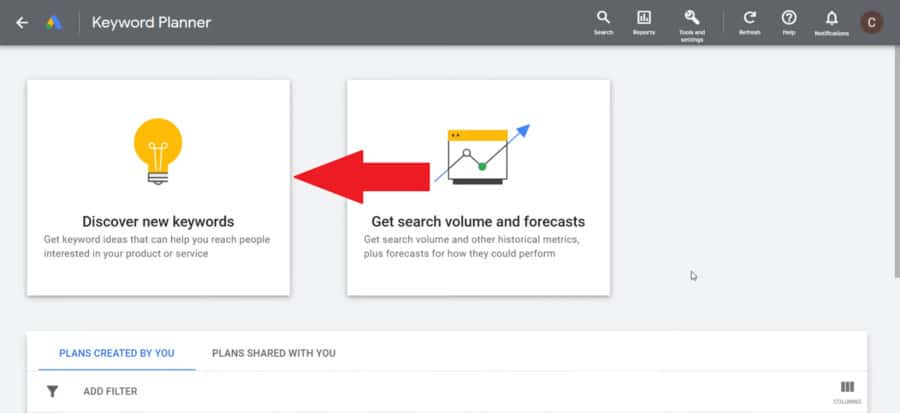
- Then click on start with a website, and enter your competitor’s URL.
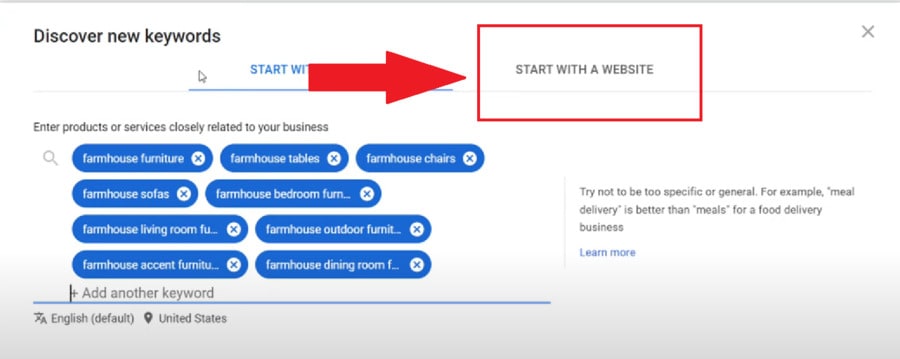
- Click “get results.”
Ready to Conduct Your Own Competitor Keyword Analysis?
Competitor keyword analysis is a clever way to approach search engine optimization.
Instead of aiming in the dark and making mistakes, you can target keywords that have proven to be successful. The process requires a thorough understanding of who your competitors are.
Use your discretion and judgment to identify the areas in which you actually want to beat your competitors. Take into consideration the available resources and funds while doing so.
Enjoyed this article? Let us know in the comments section, as well as any questions you might have.
Disclosure: This post may contain affiliate links, and we may earn a small commission, at no extra cost to you. However, this does not impact our reviews and comparisons. We try our best to keep things fair and balanced in order to help you make the best choice for yourself.








Related Articles
What is Digital Marketing? Everything You Need to Know
Best Blogger Outreach Tool – 21 Tools to Minimize Your Outreach Efforts
33 Free Google Marketing Tools for Marketers and Developers
22 Best Online PR Tools to Build and Monitor Media Relations
Digital Marketing for Startups: The Strategies to Use in 2024